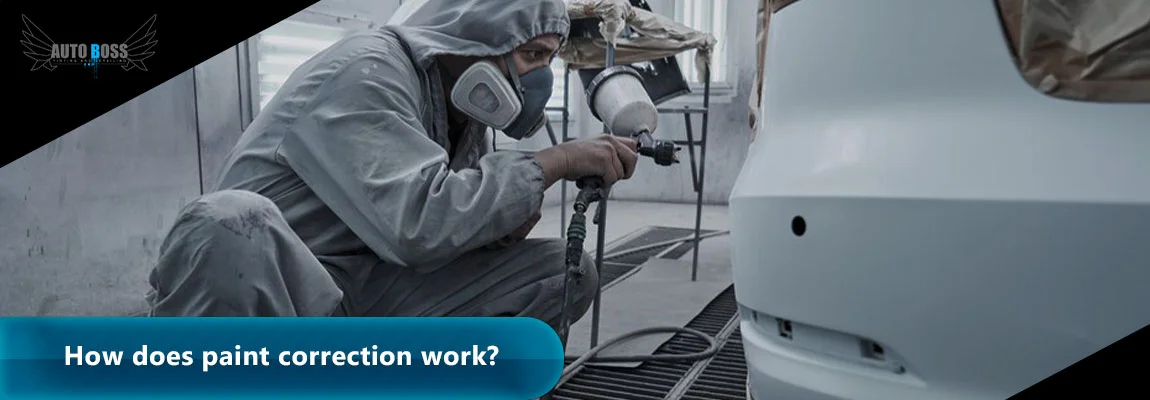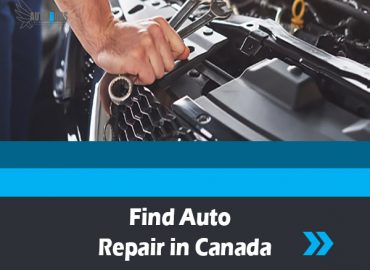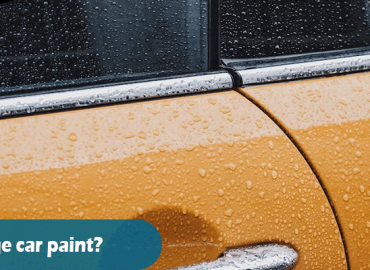Every car owner wants their car in a pristine look especially when it comes to selling. When you drive your car, it is exposed to extreme weather conditions and the sun’s UV rays that cause wear and tear, scratches, paint cracking, and swirl marks over time. Paint imperfections make your car less appealing, especially when you are thinking of selling it. The purchaser will look at your car. If you observe imperfections in your car and think, does paint correction work? Our article is the answer to your question. Here! We will guide you in detail about how auto paint correction works.
Paint correction
Paint correction is a detailing procedure to remove minor scratches, hazing, marring, swirl marks, marring, and other imperfections from the car’s clear coat. The process requires specialized techniques and polishing compounds. A microscopic layer of car paint is removed until the car surface smoothens.
Once the process of car paint correction is completed, there will be no visible scratches, swirl marks, or other defects. Before going through the process, we will discuss what are the car paint layers and how they work?
Car paint
Car paint has three coats
- A primer
- A base coat
- Clear coat.
The primer is the first layer of paint on your car. It is applied to prepare your car for the next process.
A base coat is applied on the primer that gives your car its first color
A car’s clear coat is applied to protect the car’s outer layer and give it a shiny and protective layer.
Steps involved in car painting
The important steps involved in car painting are :
Preparation
Preparation or media blasting removes rust, flaws, and other imperfections from the vehicle frame or surface. The auto painting experts use pressurized air to shoot out tiny particles from the car surface and clear the paint nozzle. It is a critical step in preparing the car body for a smooth finish.
Applying prime
After your car body is prepared and clear, primer is applied. It is a paint made of solvents, resin, and additives that are helpful in preparing the car surface for actual car paint or the base coat.
A primer coat is helpful in even out your car’s body surface. It also protects the vehicle’s body from extreme heat, rust, UV rays, and stone shards.
Applying Base coat
The color coat, also known as a base coat, is applied after primer. It is colored paint that provides foundational color to your vehicle.
Base coats come in four different types: matte, iridescent, metallic, and solid. Each of the four types has unique qualities and produces a different finish. The matte finish is better at hiding scratches, while the pearlescent finish makes the paint glow and changes colors under different light shades. The metallic car finish is more bleach-resistant, and the solid finish is the easiest to repair.
Applying clear coat

Applying a clear coat is the last step in automobile painting. It is a protective shield on the base coat from external elements. It is also UV resistant. You must apply a durable clear coat for long-lasting protection. You can strengthen the clear coat by applying polish or wax. You can also get professional paint protection film or ceramic coating.
Related Article: PPF Coating Vs. Ceramic Coating: Which is Best for Vehicle Protection?
Material required for paint correction
If you want to know, does paint correction work? The answer lies in the usage of proper materials and techniques to help you get the best results. Important tools or compounds include
Machine polisher: it is used to polish the car’s clear coat to remove scratches. It helps remove the car’s clear coat and leave it looking smooth while increasing the paint’s lifespan.
Polishing pads: These are attachments that are used to eliminate swirls, stains, and scratches. Polishing compounds are available in different sizes and materials, including wool, microfiber, or foam. Foamic pads are perfect because it is easier to work with them. However, microfiber pads are able to cut through ceramic coating. In contrast, woolen pads generate a low level of heat while giving better results on the paint.
Polish or shinning compound: A polish is a chemical that is used to restore a car’s original color. However, compounds are aggressive and used to remove heavy etching and scratches.
Polish or Compound: A polish can serve as the main chemical used to restore the car to its original color. Polish is the least aggressive. It is only used to remove light marks and scratches left by compounds. Compounds are more aggressive and used for removing heavy scratches and etching.
Car paint sealant: It consists of synthetic polymers that repel environmental factors such as excessive heat, UV rays, and acidic rain.
The process of paint correction
A professional paint correction process requires an electric polisher, microfiber buffing pad, and compound to remove the layer of the car’s clear coat until the scratches are removed. Here is the step-by-step process.
Clean the panel
If you want to achieve the best results, it is important to remove the contaminants from the surface area before starting the paint correction process. First, remove dirt by using the decontamination process. Professional car paint detailing experts use iron remover, a decontamination spray, or a clay bar to ensure deep or microscopic cleaning and reduce the possibility of further damage.
Pro-Tip: It is important to wash your car prior to any decontamination treatment.
Assess the scratches

When your car’s clear coat is clean, it is important to examine the surface properly to understand the reason and severity of the damage. After proper analysis, you may know how deep the scratch is and which equipment type you need to use. Proper analysis ensures whether paint correction works or not. Or how much work is required to achieve the desired results? Here are some ways to analyze the scratches.
Move your hand over the car surface; if no scratch is felt, it means only minor scratches are present on the car’s clear coat. You can fix minor scratches with a chemical remover or apply a polish coat to get it repaired.
If the metallic surface of the car is visible, the base coat is likely to be damaged. It is serious damage, and you will require paint touch-ups.
Level the car surface.
A microfiber cutting pad is required to level the car surface. The process includes
- Applying a cutting compound and microfiber cutting pad on an electric polisher, then buffing it into a smaller area. Keep buffing in backward and forward motions.
- When the cutting pad starts wearing out, replace it with a new one. Auto Boss experts suggest replacing the cutting pad after six square feet to avoid scratches. If you don’t change the cutting pad, it may cause scratches to the unaffected paint areas.
- Repeat the whole process until you get the best results.
Polish
You can use car polish to remove marks, scratches, or other imperfections from the car’s surface without changing the car’s actual color. For instance, it can take a few stages to get the process completed. Use abrasive polishing to remove deep scratches while using the fine polishing stage to remove light scratches.
Recoating
Once the polish is complete, apply a reinforcement layer to the car’s clear coat. Car recoating protects your vehicle from scratches and protects it from environmental factors. Apply wax on the corrected surface. Ceramic coating is also a good option if you have enough budget because it may last up to five years and is more scratch-resistant.
Conclusion
It is the harsh reality that everything depreciates over time, from wood and iron to glass, and car paint is also not an exception. Car paint loses its shine over time because of the sun’s exposure and other elements. Once you observe color fading, it is a good idea to take your car for paint correction. Car paint correction experts like Auto Boss provide your vehicle with the best paint correction. You will find the best solution to the question: does paint correction work? Our paint correction process does work and makes your car look like a new one. Contact our professionals to get the best in-town car paint detailing and correction services. Our detailers are trained enough to provide your car perfect appearance without damaging your car paint.
FAQs
Does car paint correction last?
Yes! If you take proper maintenance and care of your car, the paint correction effects last for a few months to years.
Does the paint correction process involve removing paint?
Yes! Paint correction involves removing a very thin layer of a car’s clear coat with abrasive polishing compounds and pads.
Is paint correction different from polish?
Yes! Polishing is just a part of paint correction. Paint correction is a vast term that involves removing imperfections from the paint’s clear coat.
Can paint correction fix deep imperfections?
Yes! Paint correction eliminates swirl marks, scratches, and deep marring.




